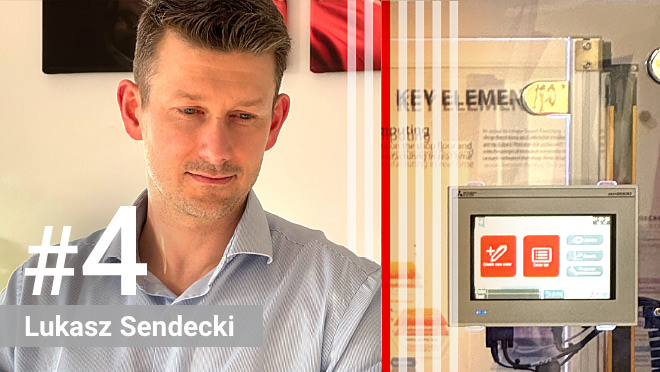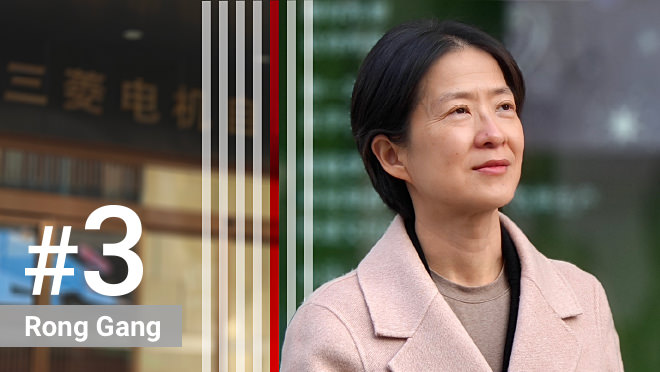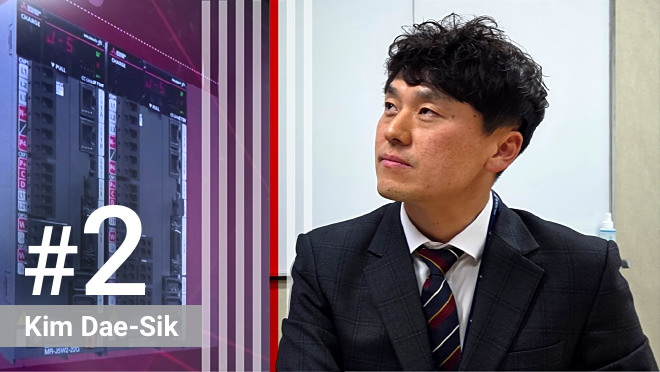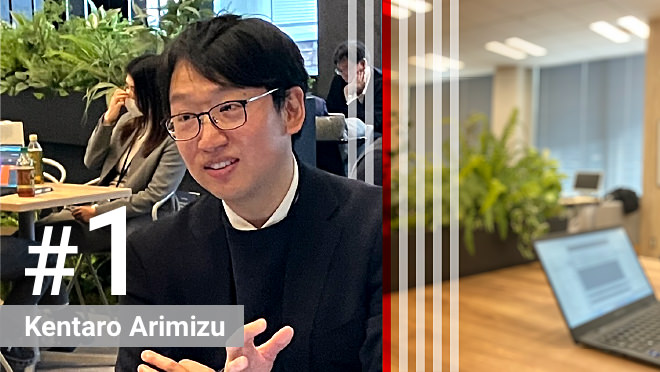About Mitsubishi Electric Factory AutomationThe Road to Automating the WorldInterviews with People Involved in the Factory Automation Systems Business

Having Fun with “Monozukuri” and Data UtilizationYohei Tsujita,
Associate Expert of Digital Manufacturing Engineering Section, Production Systems Planning Department, Nagoya Works,
Joined Mitsubishi Electric in 2018
2025-07
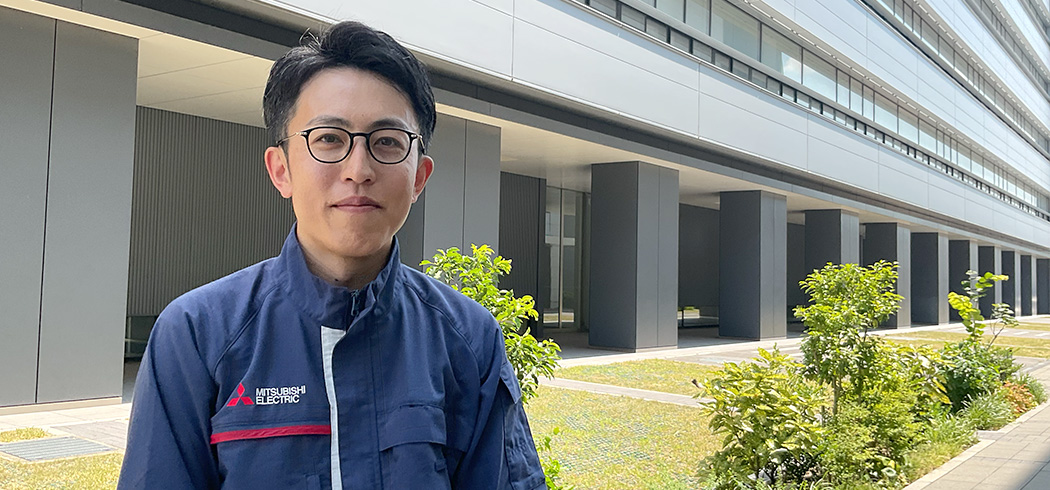
Mitsubishi Electric’s FA systems business aims to enable employees to fully demonstrate their ideas, technologies, and beliefs to achieve the common goal of “Automating the World.”
Through the “The Road to Automating the World” series, we share their authentic voices from around the world. In this article, we interviewed Mr. Yohei Tsujita of the Digital Manufacturing Technology Group in the Production System Promotion Department at Nagoya Works, who works on the “transformation of manufacturing” through the use of digital technologies.
Developing Mass Production Technologies after Repeated Trial and Error
── What made you decide to join Mitsubishi Electric?
Tsujita: I liked making things since I was a child. With an ambition to become an engineer, I chose a university where I could learn about a wide range of areas, including machinery, electrical appliances, and image processing. After graduating from university, I joined a manufacturer of substrates for PCs and mobile phones. I worked there as a production engineering technician for ten years. Over time, I started to get more interested in a wider range of manufacturing, which inspired me to change jobs. In the end, among several options, I chose to work for Mitsubishi Electric because I was drawn to the opportunity to contribute to manufacturing in different industries through the FA products they produce. After joining the company, I proactively took on new challenges, striving to improve my skill set and expand the scope of my tasks.
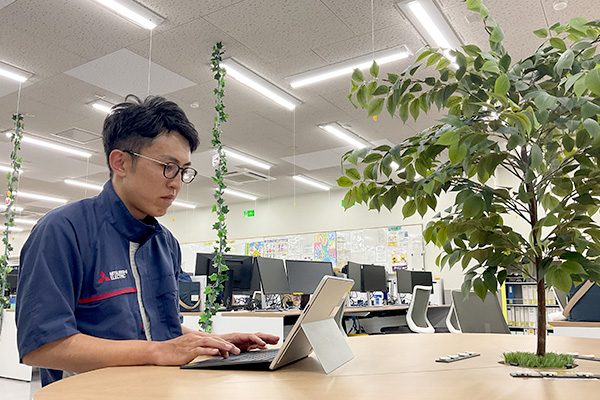
── What tasks have you taken on at Mitsubishi Electric so far?
Tsujita:Since joining Mitsubishi Electric, I have dedicated most of my time to developing mass production technologies for servo motors, such as the “HK Series” (launched in 2019). During this project, I established solutions for producing “caulking-free core” motors, which are characterized by reduced size and lower eddy-current losses. Compared to traditional motors, these offer an average reduction of 25% in eddy-current (iron) losses and a size reduction of up to 20%, attracting considerable attention within the industry.
In recent years, more companies have entered the market, adopting this manufacturing technology particularly for electric vehicles. However, it was believed that the mass production of servo motors would be a huge challenge at that time.
── What challenges have you faced during the development of mass production technologies?
Tsujita:One of the significant challenges we encountered was related to the “caulking-free core” technology, which involves laminating layers using adhesive instead of metal indents, known as caulking. For mass production, it was crucial to maintain high-productivity while minimizing adhesion failures.
To tackle this issue, we conducted a thorough investigation into the factors contributing to adhesive failures. We meticulously controlled the adhesive application timing to the millisecond and carefully considered the temperature conditions during the process. We generated several hypotheses and validated them with data, engaging in a rigorous trial-and-error process until we identified the optimal solution.
Ultimately, we pinpointed the most influential factors affecting adhesion and implemented effective countermeasures. This allowed us to establish reliable technologies for mass production, ensuring both efficiency and quality in our manufacturing process.
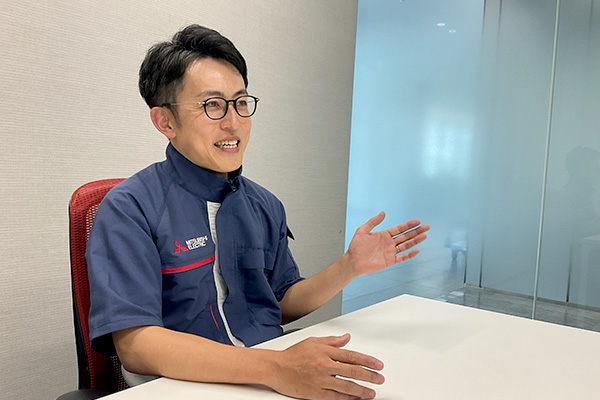
Tackling the Digital Transformation of Monozukuri through Data Utilization
── We have heard that you are now working in a new area.
Tsujita:Yes, I have been focusing on monozukuri, the art of manufacturing, what I’m really involved with is its digital transformation. While we collect a vast amount of data at production sites, it’s not being fully utilized yet. Since April 2025, we’ve been working on a “Proof of Concept” (PoC) at Nagoya Works, a key manufacturing site in Japan. Specifically, we’re testing how we can make use of this untapped data through low-code tools and other user-friendly platforms.
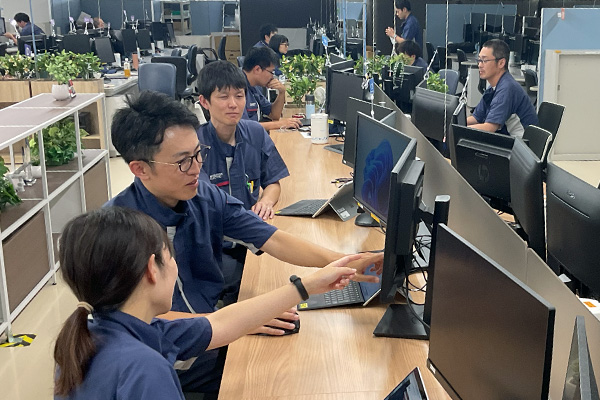
── What is the most rewarding part of your job?
Tsujita:One of the most rewarding aspects of my job is the opportunity to apply my ideas and creativity in developing manufacturing technologies for servo motors and initiatives focused on data utilization. I also enjoy taking on new challenges. Before joining Mitsubishi Electric, I worked as a user of FA products. Now I am on the development side, while still occasionally experiencing the user perspective. This dual experience allows me to create technologies with the user’s viewpoint in mind, which is incredibly satisfying for me.
── Could you share with us what you think the appeal of “monozukuri” is, as well as your future goal.
Tsujita:I believe the most appealing aspect of monozukuri is witnessing new ideas transform into tangible products. It’s incredibly rewarding to see those products being used by customers and to experience their joy as they solve their challenges. However, as competition in manufacturing intensifies each year, it’s critical to respond swiftly to changes. This is where data utilization becomes essential, as it not only improves product quality but also aids in visualization and facilitates quick decision-making. My goal is to make monozukuri more enjoyable and attractive through digitalization and the effective use of data.
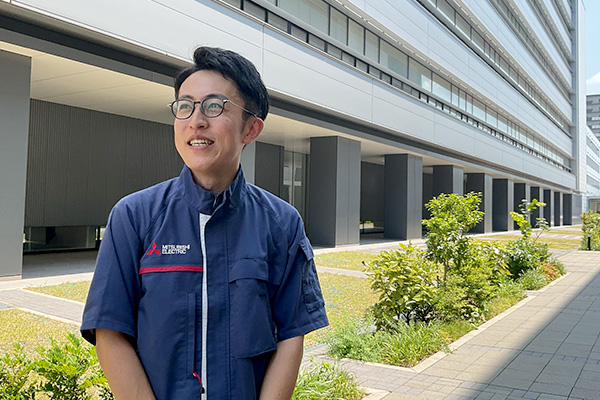
*This article is based on interviews conducted in July 2025.

